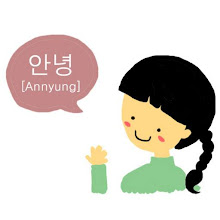 무쿨 씨는 인도 사람이에요. 그리고 친구도 인도 사람이에요.
무쿨 씨는 인도 사람이에요. 그리고 친구도 인도 사람이에요.
Mu-kul is Indian. And his friend is also Indian.
아버지는 키가 커요. 그리고 저도 키가 커요.
My father is tali. And I am tall, too.
왕징 씨는 사과를 좋아해요. 그리고 딸기도 좋아해요.
Wang Jing likes apples. And she likes strawberries, too.
Grammar Focus:
1. 도 is used after subject and object nouns to express the listing of subjects and objects or the addition of a subject or object to one mentioned previously. This meaning corresponds to ‘also’ or ‘too’ in English.

When added to a subject particle, the subject particle is omitted, leaving only 도.
• 나는 한국 사람이에요. 그리고 친구는도 한국 사람이에요. (X)
->나는 한국 사람이에요. 그리고 친구도 한국 사람이에요. (〇)
I’m Korean. And my friend is also Korean.
Similarly, when added to the object particle, 을/를 is omitted, leaving only 도.
• 나는 사과를 좋아해요. 그리고 딸기를도 좋아해요. (X)
->나는 사과를 좋아해요. 그리고 딸기도 좋아해요. (〇)
I like apples. And (I like) strawberries, too.
When 도 is added to particles other than subject or object particles, however, the other particle is not omitted.
• 일본에 친구가 있어요. 그리고 미국에도 친구가 있어요. (〇)
I have a friend in Japan. And (I have a friend) in the USA, too.
일본에 친구가 있어요. 그리고 미국도 친구가 있어요. (X)
• 집에서 공부해요. 그리고 도서관에서도 공부해요. (〇)
I study at home. And (I study) in the library, too.
집에서 공부해요. 그리고 도서관도 공부해요. (X)
• 친구에게 선물을 주었어요. 그리고 동생에게도 선물을 주었어요. (〇)
I gave a present to my friend. And (I gave a present) to my younger sister, too.
친구에게 선물을 주었어요. 그리고 동생도 선물을 주었어요. (X)
Conversation:
A: 무엇을 먹을 거예요? What will you have to eat?
B: 비빔밥을 먹을 거예요. 그리고 된장찌개도 먹을 거예요.
I’ll have bibimbap. And I’ll have doenjang stew, too.
A: 요즘 무엇을 배워요? What do you study these days?
B: 한국어를 배워요. 그리고 태권도도 배워요.
I study Korean. And I also learn taekwondo.
A: 어제 생일 파티에 누가 왔어요?
Who came to the birthday party yesterday?
B: 마틴 씨가 왔어요. 그리고 요코 씨도 왔어요.
Martin came. And Yoko also came.
Click below:
N이/가
N은/는
N을/를
N와/과, N(이)랑, N하고
N의
N에 ①
N에 ②
N에서
N에서 N까지, N부터 N까지
N에게/한테
N도
N만
N밖에
N(으)로
N(이)나①
N(이)나 ②
N쯤
N처럼, N같이
N보다
N마다
>> Full of 'Korean grammar in use - Beginner': Click here
search bar
Social Network
Popular post
-
There are Korean Grammar in Use (Beginner) online lessons based on 'Korean Grammar in Use' book. You can keep tracks of your study o...
-
There are Korean Grammar in Use (Intermediate) online lessons based on 'Korean Grammar in Use' book. You can keep tracks of your stu...
-
Due to copyright reasons, starting from 9/11/2023, sayhikorean will only share links to the online book page of the Korean Language Institut...
-
According to the KIIP book of Korea Immigration & Integration Program - Level 3 (이민자를 위한한국문화 한국어와 - 중급1), Say Hi Korean translated all ...
-
KIIP Level 4 (New edition) According to the official KIIP book “한국어와 한국문화 – 중급2” (Korean Language and Culture for Immigrants – Level 4...
-
Due to copyright reasons, starting from 9/11/2023, sayhikorean will only share links to the online book page of the Korean Language Institut...
-
There are Korean Grammar in Use (advanced) online lessons based on 'Korean Grammar in Use' book. You can keep tracks of your study o...
-
There are sample tests and practice tests of KIIP from level 0 to level 5 for free download. 1/ KIIP level 0 sample test: https://goo.gl...
-
Vitamin Korean is available in various online bookstores with 10% discounts such as Coupang. You can buy it from the link below. Buy the w...
-
If you think the books are interesting and useful, I suggest buying them to support the authors and you can buy via Coupang at the link at t...
Label
- Advanced Korean Grammar 84
- Basic Korean Grammar 114
- Ebook 15
- Festivals in Korea 1
- Guardians of Heritage 5
- History of Korean 16
- Intermediate Korean grammar 94
- K-pop 4
- KIIP Guideline 8
- KIIP level 2 22
- KIIP level 3 36
- KIIP level 4 38
- KIIP level 5 32
- Korea technology 3
- Korea Tourism 53
- Korean Culture 80
- Korean Economy 4
- Korean Expression 6
- Korean Film 7
- Korean Foods 21
- Korean grammar dictionary 612
- Korean Job 4
- Korean Lifestyle 5
- Korean News 267
- Korean reading practice 451
- Korean Sports 4
- Korean vocabulary 6
- Let's learn Korean culture 37
- National Museum 3
- News in Korean 78
- Study in Korea 2
- TOPIK II 쓰기 18



.jpg)





0 comments: